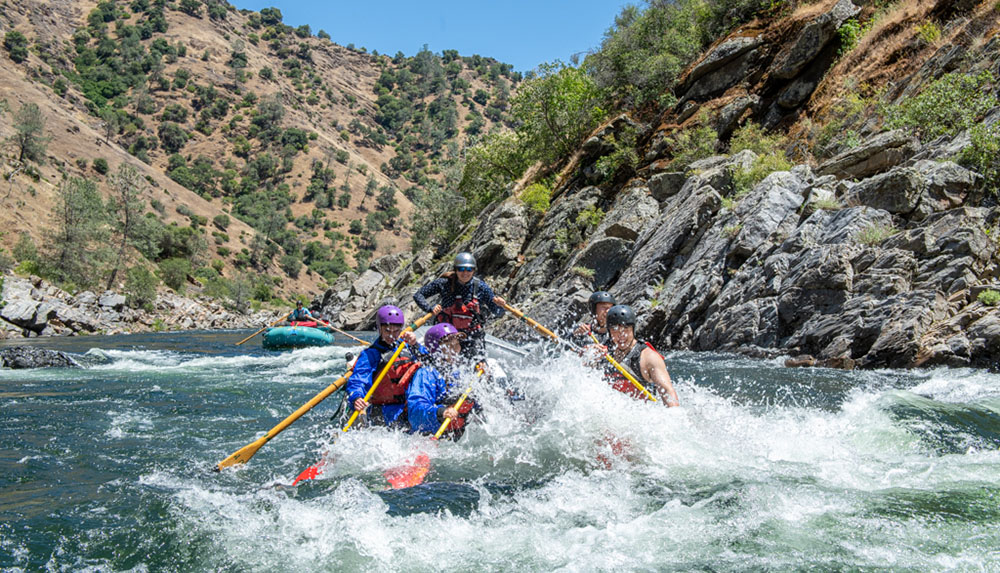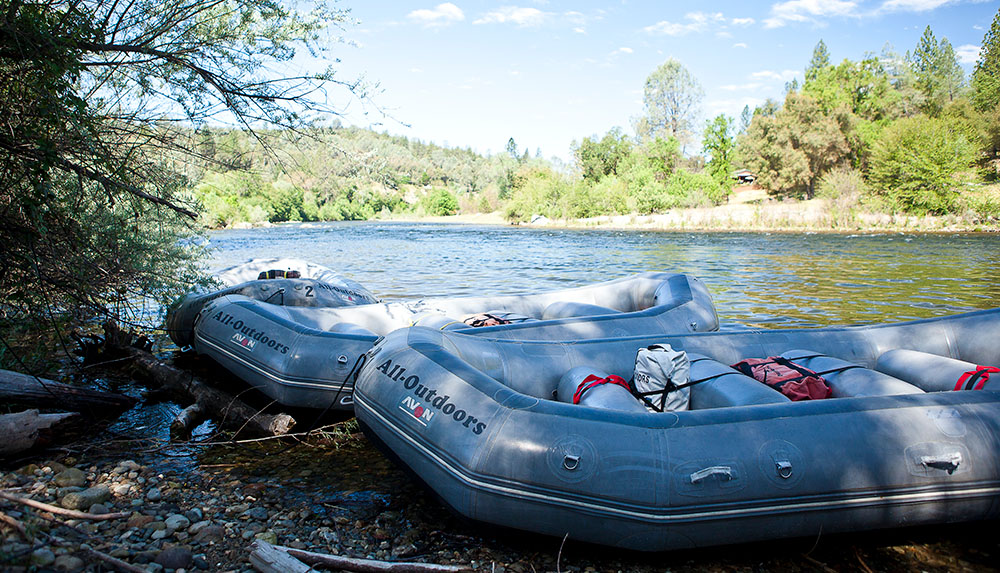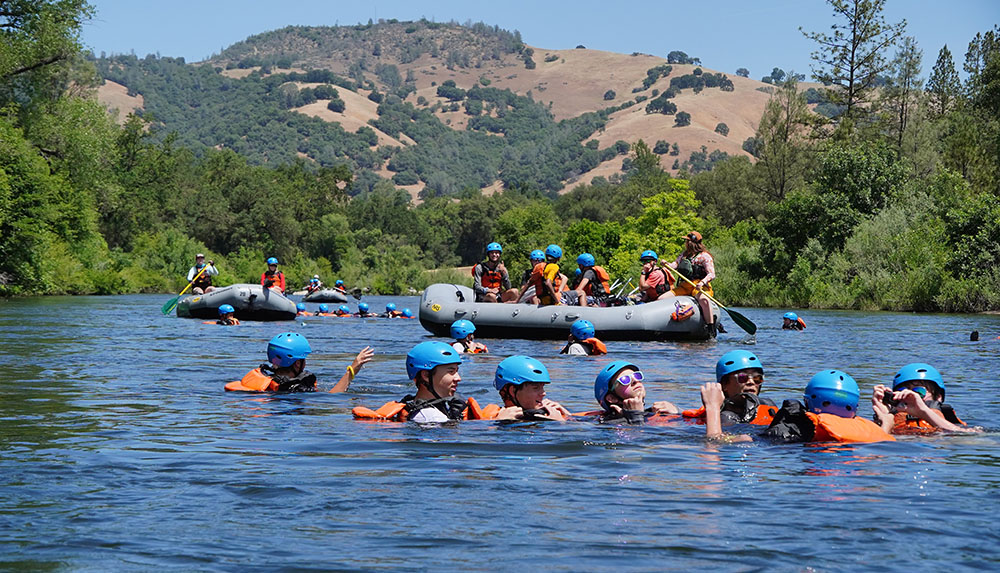Whitewater Rafting Terms Explained
Posted September 18, 2024 by Reily Schultz
There are a number of technical terms beyond rafting equipment and moves that guides must understand before they even get out on the water. Take a look at some of the vocabulary terms necessary for an educated conversation and execution of a rafting trip.
CFS
This acronym stands for Cubic Feet per Second. This measurement tells us the volume of water passing through a point in the river each second. One cubic foot is roughly the size of a basketball, which can help us visualize its volume. Higher CFS means more water and a faster current. Every river has its own range of flows measured in CFS, within which it’s considered at ‘normal’ water flow levels for rafting. These ranges are not universal between rivers. Rivers can become unrunnable at higher-than-average and lower-than-average flows. You can monitor river flows with our Real-Time Flow Reports for California Rivers.
River Classification
Whitewater rafting rivers are rated on the international scale of river difficulty ranging from Class I (flatwater) to Class VI (unrunnable). For a description of each difficulty level, check out our visual guide to White Water Rafting Levels / Classes.
Paddling vs. Rowing
These two terms are sometimes used interchangeably by novice rafters, but they in fact mean different things. Paddling is done with a single paddle per rafter, whereas rowing is done by the guide with a pair of oars.
On our rafting trips we utilize two types of setups: There are paddle rafts where each guest, as well as the guide, use paddles to steer the boat and propel it forward. The second setup we frequently use is an oar-paddle combination, with the guests paddling and the guide rowing. Learn more about the difference in our River Rafting Gear post.

River Left
When looking downstream, the left side of the river. This is a constant that doesn’t change with the raft’s orientation on the water.
River Right
When looking downstream, the right side of the river. This is a constant that doesn’t change with the raft’s orientation on the water.
River Put-In
The put-in is the river access location where rafts and rafters enter the water. Oftentimes, but not always, there is a shuttle ride from the trip meet place to the put-in location. Guides finish rigging the boats, give final orientation and instructions to guests and the splashy part of the river trip begins.
River Take-Out
Take-out is the designated spot along the river where rafts and rafters leave the water, load up all the equipment, and typically (but not always) start a shuttle ride back to the meet place.

Tow
Just like a tow truck tows a car, sometimes rafts will be towed by a motor boat through still water (like a lake at the end of a rafting trip) to reach take-out to save rafters the extra work of paddling without a current to propel them.
Swimmer
Anytime a rafter is out of the boat, they are referred to as a swimmer as they are now swimming in the river. Swimmers will be asked to swim back to the raft, or will be retrieved by a guide as soon as possible.
